Estimated reading time 24 minutes, 43 seconds.
When LGen Eric Kenny assumed command of the Royal Canadian Air Force (RCAF) in August, he identified four broad themes for immediate attention: investment in people, readiness for operations, modernizing for tomorrow, and effective partnerships.
Less than 90 days into the job, his focus has been on people and procurement, tackling a personnel shortage and a lengthy list of acquisition projects. At the same time, he is finalizing Air Force 2035, a strategy that could transform the RCAF of today, leveraging disruptive technology while enhancing the critical roles of aviators.
A former CF-188 pilot with 2,200 hours on the fighter jet, Kenny has deployed to Italy for Operation Mobile over Libya, and to Kuwait as the first Air Task Force commander for Operation Impact over Iraq. He most recently served as the commander of 1 Canadian Air Division/Canadian NORAD Region at 17 Wing Winnipeg. Kenny recently spoke with editor Chris Thatcher for an exclusive Q&A. See his answers below.
Skies: Prior to 2020, the Air Force was able to decrease its pilot shortage from around 275 to about 200. What’s the pandemic done to those and other personnel numbers?
LGen Kenny: Since the beginning of the pandemic, we have gone down by several hundred people. That’s across all our 28 Air Force-managed trades. We’re also seeing it across all the other trades that work at our Wings. There are many reasons, but it’s primarily from the lack of recruitment that occurred since March 2020 until well into 2021. We were recruiting, but to a much lower number because of Covid-19 constraints on ab initio training. Coupled with a normal release rate, we have less people.
Interestingly, pilots have not been as affected. There was a decrease in aviation industry requirements throughout the pandemic, and we were able to retain some members who were in the process of releasing and bring back others who had recently released, in the Reserve and Regular force.
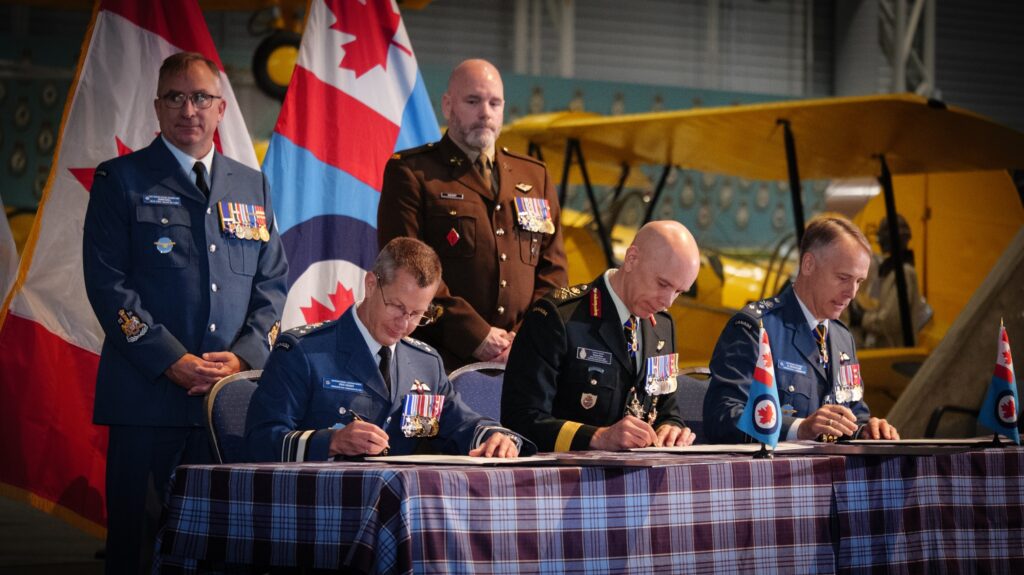
Skies: For several years now, you have had initiatives (Operation Experience and Operation Talent) to retain experience on the squadrons and improve the service life of members: What’s the net result of those so far?
LGen Kenny: We were doing very well prior to the pandemic. We were growing as an air force through Op Talent and Op Experience – we were at the highest point that I had seen in many years. But because of the pandemic and the shortage of recruiting, we’ve now decreased. We were able to achieve the majority of our initiatives for Op Experience. With Op Talent, we’re now looking at all our trades, on how we can best contribute to their quality of service and quality of life. And that is getting pulled into the discussion on reconstitution that the Chief of the Defence Staff has spoken about.
Skies: What could reconstitution mean for the RCAF?
LGen Kenny: We’re finalizing the RCAF strategy that I’m hoping to release by the end of this year, or early 2023. That sets the Air Force of 2035 that I can now plan to achieve — and it is a much different Air Force [in 2035]. Reconstitution for me is about: What is our current state? What is the future Air Force that we wish? And how do we prioritize our efforts to achieve it? For the Air Force, reconstitution means how do we realign our plans to include Op Talent to achieve our strategy of 2035?
Operations
Skies: The Russian war in Ukraine has confirmed and challenged the thinking of many about capability and future investment. Has it affected how you look at readiness?
LGen Kenny: Absolutely. I think it’s challenging the world to look at not only what is going on in Ukraine, but also at the reality of state-on-state conflict. Besides the threat of Russia, what does this mean beyond Ukraine, to what’s going on in China, North Korea, and other places? What does it show me going forward? There’s been a realization by many that when conflicts such as this occur, you have what you have at the time; there’s not necessarily an ability for industry to rapidly build inventories of munitions, consumables, parts, etc., that you may wish to have.
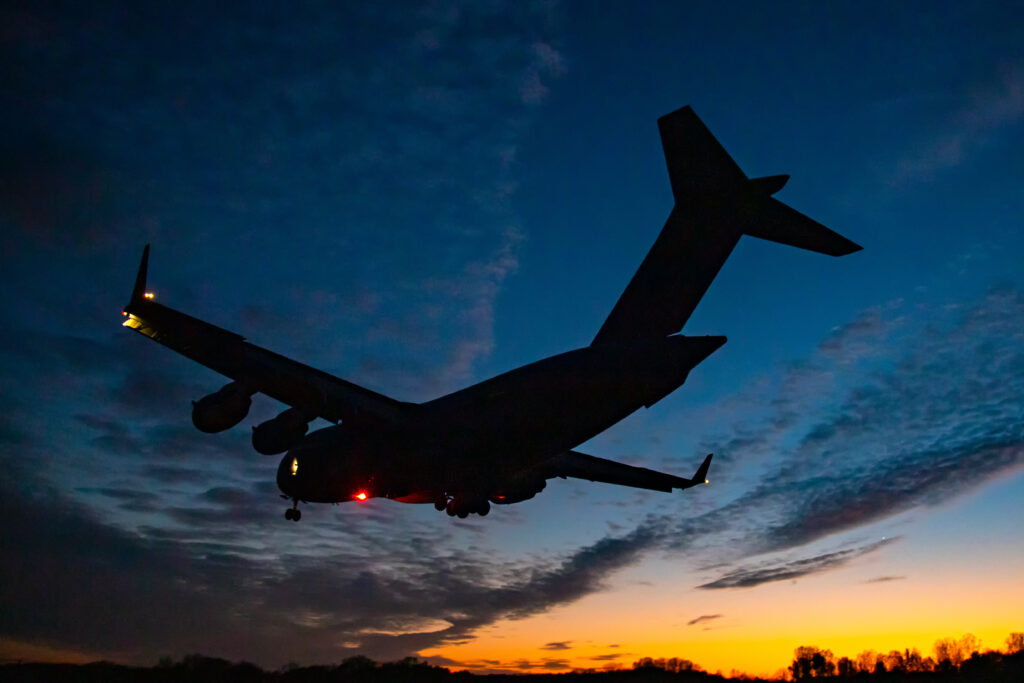
It has also shown the value of having air superiority and an integrated air and missile defense. If Ukraine or Russia were able to achieve air superiority, we would have a much different outcome than we’re seeing.
I’m proud of what we have been able to achieve in support of Ukraine, flying CC-177 missions right until the day prior to the invasion. Since then, we have established a spoke and hub operation with our CC-177s and CC-130Js, operating through Prestwick to provide lethal and non-lethal aid from many different donor countries to places close to Ukraine.
Skies: Has what you’ve seen caused you to reprioritize any projects?
LGen Kenny: We haven’t changed any priorities in terms of which projects we are going to do first. I think that is primarily because the projects that we are moving forward are looking to address the gaps that we’re seeing. With the Future Fighter Capability Project, which is in the finalization phase, we hope to see a contract awarded by the end of this year. Then, the new TPS 77 radars; we will start receiving those next September, first into Cold Lake and then Bagotville to replace our TPS 70s.
Also, our Remotely Piloted Aircraft System project — which is currently under bid evaluation with a contract expected by 2024 — and our Strategic Tanker Transport Capability (STTC) project… those are looking forward. More recently, we’ve had the announcements on NORAD modernization. All those speak to the gaps that we’re seeing.

Modernization
Skies: You’ve recently acquired two used Airbus A330-200s that will be converted to the Multi Role Tanker Transport (MRTT) configuration; until then, they will be used in a cargo/personnel transport capacity. What does the NORAD commitment now mean?
LGen Kenny: The STTC project was initially envisioned to give us enough aircraft to do three continuous lines of tasking, which would provide us a transport as well as a refueling capability. NORAD modernization has provided us funding to buy additional air refueling capacity. So, we will go from a requirement of three lines of tasking to five. This means the fleet will be larger than the initially envisioned five to six A330-200s. I foresee somewhere around nine total aircraft, but that is not finalized. All those are envisioned to be MRTTs.
Our first two A330-200s are used aircraft with lots of life left on them. They will be arriving in the first four to five months of 2023, in a transport configuration. There is a multi-year wait to cycle aircraft through the Airbus MRTT modification line, so they will be used in transport roles and then eventually modified to the MRTT configuration. We’re also looking at acquiring more, in a mix of new and used aircraft.

I don’t anticipate having an A330 that’s capable of doing air refueling until late 2025/early 2026. And because of the timeline to get into the modification line, 2026 or 2027 is probably more realistic. All those aircraft will eventually be used for NORAD purposes. And they will be used to meet NATO obligations.
Skies: There’s no longer a requirement for a tactical tanking aircraft, especially for CF-188 fighter training, that is currently provided by the CC-130H Hercules?
LGen Kenny: No, and that is very much in line with many of our allies. We need to be selective in what we need. We’re going with a bigger aircraft. The A330-200, once it’s converted to MRTT, will be able to do the tactical and strategic air refueling. It will have both probe and drogue and boom capabilities and able to service multiple receivers, which gives us the options for both the CF-18s, which we will continue to operate until 2032, and the future fighter. It will help with other NORAD fighters that operate within the CANR (Canadian NORAD Region), and with support for NATO. It’s going to be a very capable aircraft that is maybe not what you would traditionally view as a tactical air-to-air refueler, but it will have the systems on board to allow it to go into a higher threat environment, if required, and with offloads that are significantly larger than we’ve ever had with the Herc.
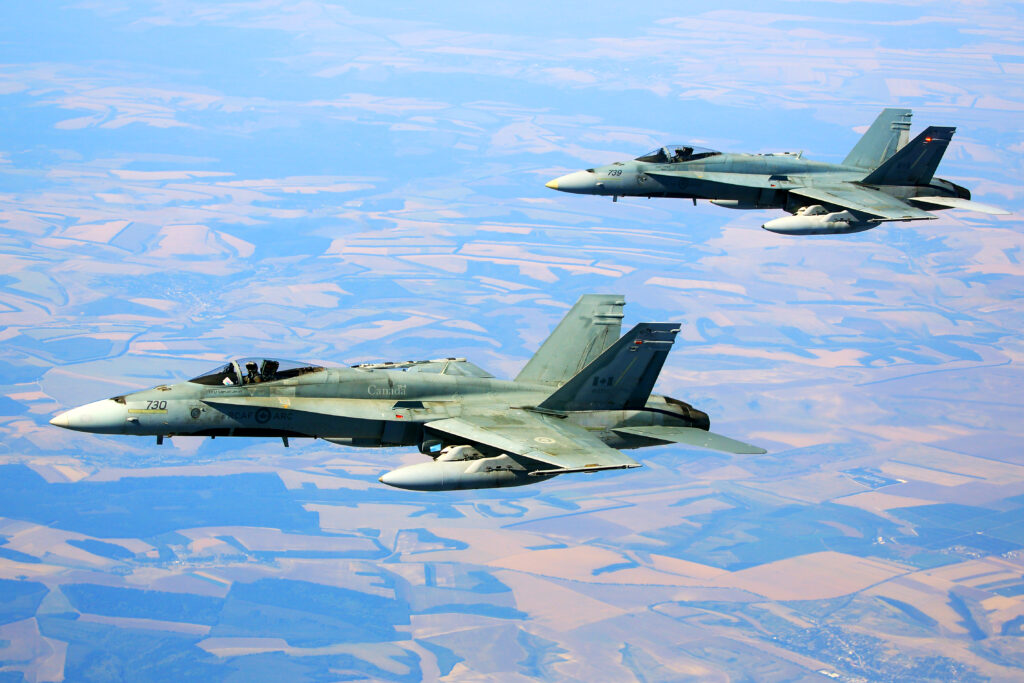
Skies: As part of that NORAD role, do they need to be based further north?
LGen Kenny: We’re still doing an analysis on the basing locations. An A330-200 is about 50 percent bigger than our A310s and can only go to certain airfields in Canada. When you look at possible locations for basing and operating A330s, it does lead you to specific airports. That doesn’t mean we can’t consider expansions to accommodate A330s. But you don’t necessarily need to do that. We have typically used our Hercules tanker in places such as Inuvik, but an A330 can fly for an extended period and still provide a vast amount of offloaded gas. It does not need to be located right beside the fighters. We’re looking at the best location to allow you to refuel and service an A330, while still meeting the NORAD requirement without necessarily having to be co-located with the fighters.
Skies: There was an infrastructure upgrade requirement in the North as part of bringing on the F-35 fighter jet. Is that now factored into NORAD modernization?
LGen Kenny: NORAD modernization provided funding for 19 projects, 14 of which are sponsored by the Air Force. One of those is infrastructure to support fighter operations. Part of that announcement was funding to upgrade infrastructure at our deployed operating bases and forward operating locations to meet future fighter requirements. As well, we’re going to look at the IM/IT backbone and weapons to make sure we have the right infrastructure and supporting components to be able to do our NORAD operations. Whether the STTC component, from an infrastructure perspective, is factored into that or separate, we’re still looking at that. There was money earmarked for the additional tankers and infrastructure components that go with those, and the tankers don’t necessarily have to be located in the North to do their job effectively.

Skies: Some of those H-model Hercules are currently providing search-and-rescue (SAR) capacity in Comox while you wait for certification of the CC-295. Do you have any concerns the Kingfisher might not achieve that certification because of the design changes that were made to the aircraft?
LGen Kenny: We’re slowly making incremental gains. My focus remains on the certification, qualification, and airworthiness of the CC-295. We started initial aircrew training in early November, which will start to train our aircrew that will do the Operational Test and Evaluation in the New Year. This is a big step forward and something that we’ve been working on for a long time. We’ve just completed two maintenance training courses, as well. We’re working with Airbus, and through Public Services and Procurement Canada, to make sure that the aircraft is able to deliver the fixed-wing SAR capability that Canadians deserve.
Skies: The Boeing P-8 Poseidon is a strong candidate for the Canadian Multi-Mission Aircraft (CMMA) project to replace the CP-140 Aurora. Given that the P-8’s production line is scheduled to close soon, do you need to move that decision forward?
LGen Kenny: We’re looking at what the viable options are. As you laid out, we recognize that the P-8 line will close in the coming years, and we’re looking at what other industry options exist. The CMMA project was projected to be in the 2030s for IOC and FOC. With that in mind, we’re still looking at what is the best way forward. At this stage, it’s too early to speculate how we might proceed.
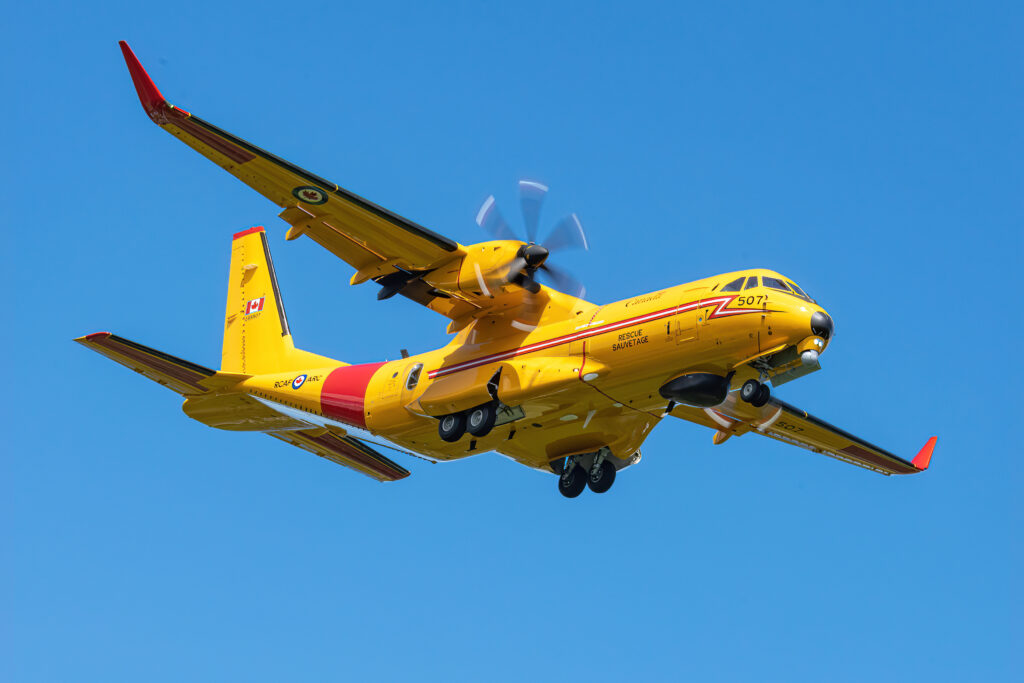
Skies: The Hornet Extension Project (HEP) was projected to reach IOC in 2023, with six of the Phase 2 (HEP 2) enhanced combat capable CF-188s ready by then. Is that still on track?
LGen Kenny: That one’s doing well. IOC is still December 2023 and we’re hopeful that we may have a few more aircraft than what we initially projected. The integration of the new radar is going extremely well, as well as some of the additional capabilities that we’re getting with the HEP 2. That project is a clear requirement to meet the current NORAD need, but it will also help us in our transition to the future fighter. This gives our aircrew and ground crew training on how to use some of these more advanced systems so that when we step into the future fighter, it should be more seamless.
Skies: Earlier this fall you declared FOC on the Electronic Flight Bag project. For a civilian pilot, I imagine that probably wouldn’t raise much of an eyebrow, but how significant a step is that for the RCAF on your digitization pathway?
LGen Kenny: As you said, it’s not a big step when it comes to civilian industry; it’s taken us a little bit longer than we would have liked. We have 1,700 electronic flight bags that have now been delivered. There are two things that we’re focused on when it comes to our digital strategy and digitalization of the Air Force. One is infrastructure and the other is the tools. It’s about providing the digital infrastructure or the backbone to allow you to use the tools. Specifically, we are increasing the bandwidth at all our wings. We’re in the process of [expanding] the WiFi capability of the hangars and on the flight lines, using 3G and 5G networks that are located nearby. That now allows tools such as the Electronic Flight Bag to be updated and to be relevant when used by the aircrew and the ground crew.
What I’m trying to achieve as a starting point is the maintainer who can pick up the device, see what tasks are assigned and bring that to work on their aircraft. They can teleconference with a subject matter expert or industry if they need to ask for something specific, watch videos on how to do it, have all their paperwork available, and when they complete their process, it will automatically order consumables and parts. They put it down, the aircrew picks it up and then they plan their routes, submit diplomatic clearances, order fuel, and the timings and crew manifest are automatically published. Then the controller, the air battle manager, picks up that same tool and sees the schedule, confirms they can control the mission, and maybe even controls the mission from their house, even if it’s at the classified level. That’s my starting point for the digitalization of our Air Force.
We’ve got a much more ambitious aim point related to cloud-based command and control, working with NORAD so that we can have the ability to command and control from anywhere in the world without necessarily being reliant on a specific building or vulnerability that would prevent us from doing that mission.
Skies: Among your modernization projects is a future Combined Aerospace Operations Centre (CAOC). Is that still a physical “nerve centre” as you have in Winnipeg today?
LGen Kenny: That one is part of NORAD modernization. We’re going to work closely with the U.S. and our allies as they’re all in the same process of looking at what they are going to do to modernize their CAOCs. Is it an infrastructure-heavy type thing or is it more of an IT/IM refresh? We don’t know at this stage as our timelines are more near the end of this current decade for implementing that. In the next one to two years, we’ll have a better understanding of what that future CAOC will look like. I do see the likelihood of having a physical location to do your work, but I don’t want to be tied to that, especially when you consider that our homeland is not a sanctuary and any opportunities we give for single points of vulnerability make us potentially a higher target for either cyber or other types of kinetic or non-kinetic effects. If I don’t have a resilient or agile system in place, we will be left without an ability to C2 air and space power.
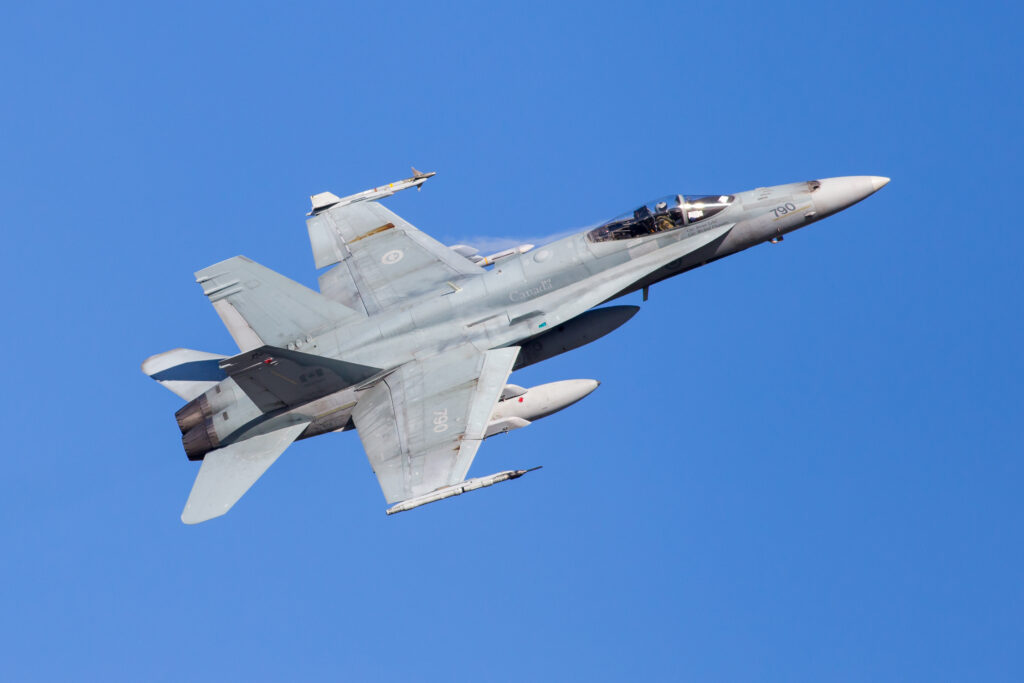
Skies: In July, you stood up 3 Canadian Space Division. What does that official operational role mean to modernization?
LGen Kenny: We’re excited. For many years, we talked about the need to better integrate and operationalize space. Although it falls under my command authority, our space enterprise is made up of Army, Navy, Air Force, and SOF, as well as a large civilian component. It’s a fully joint capability, and we’re a critical part of alliance activities in the domain — well recognized for our contribution to surveillance of space capabilities.
The division has a wing, 7 Wing, and two squadrons; their focus is strictly on the force generation and provision of space capabilities, and enablers to operations at home and abroad. We’ve transferred the force development piece over to the Air Staff. They are delivering projects like Surveillance of Space II, which is moving forward later in this decade with ground and space-based optical surveillance capabilities. Other projects include enhanced communication satellites in the Arctic, and surveillance from space capabilities.

Partnerships
Skies: As part of the NORAD modernization plan announced in June, the government has committed about $4.9 billion from budget 2022 and the current fiscal year. What else are you going to be responsible for?
LGen Kenny: One of the priorities is domain awareness. With NORAD modernization, we’ll get over-the-horizon radars for the Arctic and polar regions — meaning a radar that’s located somewhere in southern Canada that looks towards the Arctic, and a separate radar that is located in the polar region. We’re coordinating efforts with the U.S. Air Force, which is doing a similar and linked project in the U.S., to make sure that we get 360-degree coverage of North America to support NORAD. We’ll combine that with the satellite projects I’ve mentioned, and with the ground-based command and control program that NORAD wants us to bring forward, and integrate that with the future CAOC — plus RPAS, STTC, and future fighter. All those things contribute to that domain awareness, but also to the aerospace control that NORAD needs.
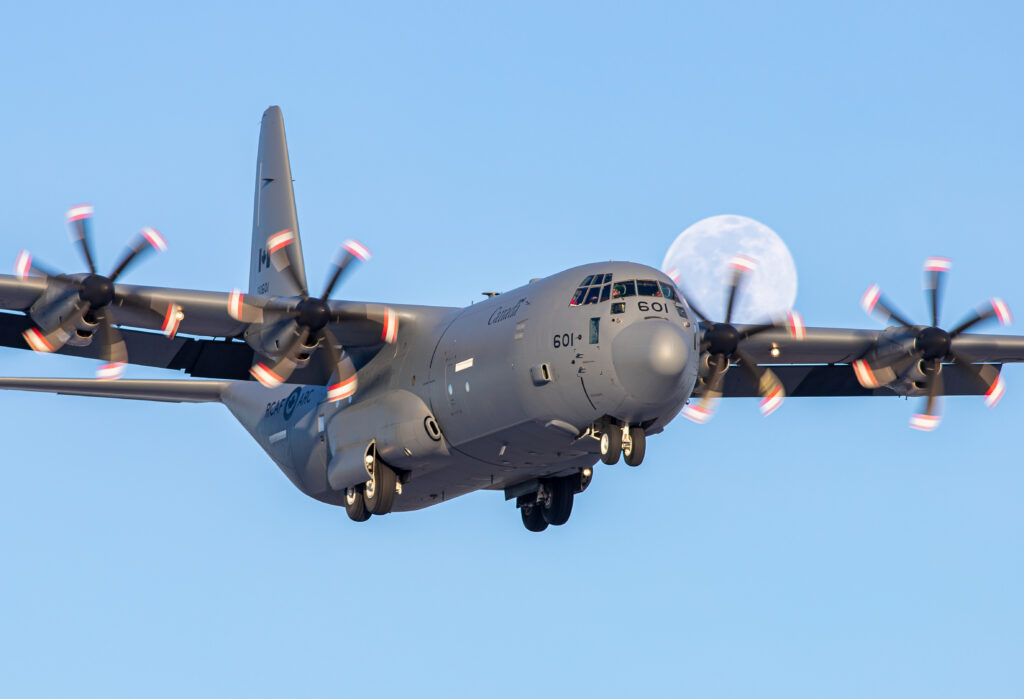
Skies: You’ve also noted the ongoing support to NATO with the airlift and the air policing. Does your modernization plan require any additional investment for NATO operations?
LGen Kenny: We’re part of the NATO reaction force and we have many of our capabilities on high readiness to be able to be committed to NATO as required. But everything I described can be used for both NORAD and for NATO. I see it in that order. Our ability to project forces from North America into Europe is contingent on our ability to protect North America. We can’t do it unless we’re able to ensure access and the free flow of equipment from North America to [Europe or the Indo-Pacific region].
Skies: Any final thoughts?
LGen Kenny: It’s a challenging time right now because of our limited resources. We anticipate by 2025 to start seeing an increase in personnel, but that’s with an assumption that we’re going to get back to our normal recruiting and hiring numbers. We’re challenged with having enough experienced personnel to do what’s asked of us right now. Therefore, I’m making very deliberate decisions on which capabilities I privilege over others.
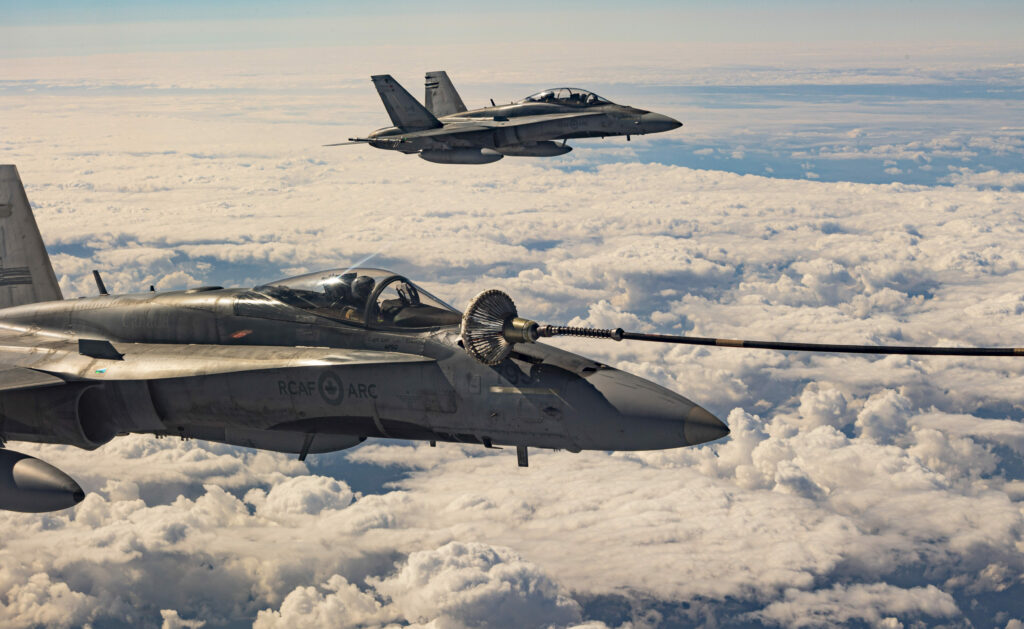
I’m prioritizing putting people towards recruitment and attraction efforts, as well as toward ab initio training, and then doing what I can to retain our most experienced personnel until we can rebuild our bench strength. The transitions to new fleets will be a challenge, but I believe strongly that if we are successful in this roadmap towards the future Air Force, we will have a very capable Air Force in the years to come. And I think we should be proud of that.

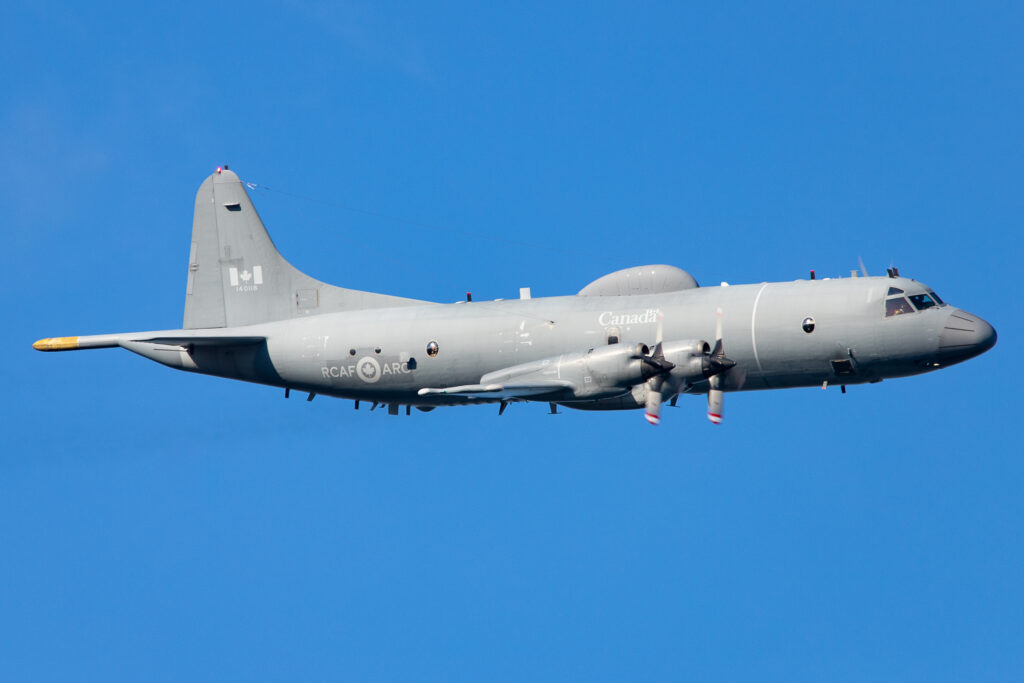
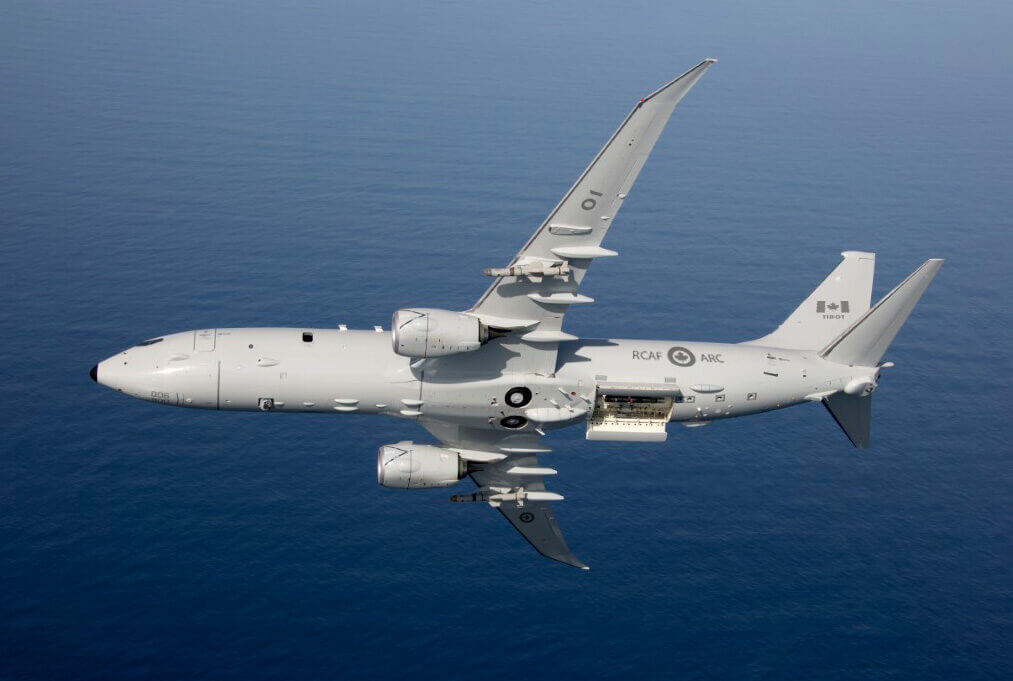

Very interesting read. Great to hear the RCAF is at least recovering from their personnel shortages and retirement rates are back to normal levels! Hopefully they can continue to keep their experienced folks given the high demand for skilled labor in the private sector!
I did find it interesting to hear how “requirements” for the RCAF really just depend on whether or not funding is available (and not the other way around), such as it is with the strategic tanker capability. Strange how only 3 lines of tasking were initially “required”, but then the requirement is adjusted because the RCAF was able to get more money. One would think requirements are known before money is asked for and/or spent. Perhaps this is a result of the commander not releasing his/her/their strategy before billions were spent on new equipment and programs?
Makes me wonder how they came up with their “requirements” for all these billion dollar boondoggle projects in the first place…like the CC-295, CMMA, future fighter, and not to mention the new frigates the RCN has asked for.
Much of this equipment is long overdue for our troops, but I think the military would be wise to have a way of justifying the billions of taxpayer dollars being spent on some of these things.
Typical. No mention of rotary wing aircraft and support to the army and navy
Hard to believe that CC-295 aircraft have been delivered to Comox with major deficiencies that will take years to rectify if they can be fixed at all.